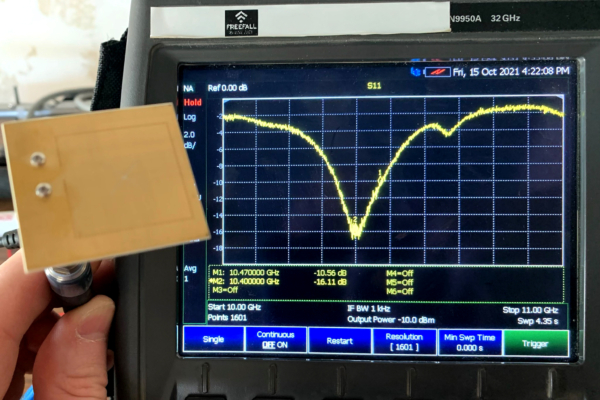Reaching New Heights: FreeFall’s Antennas Integral to SmallSat Communications on CatSat Mission
FreeFall Aerospace has achieved a milestone with its innovative antenna systems, which are now operational on CatSat, a significant NASA CubeSat Launch Initiative project. Launched July 4th in partnership with the University of Arizona, the mission, led by Principal Investigator Dr. Walker and FreeFall Senior Engineer Dr. Aman Chandra, is a technological and educational demonstration. It comprises multiple FreeFall-designed antennas, each addressing unique mission needs.
We spoke with Terrance Pat, an RF Design Engineer, to learn more about FreeFall’s three unique antennas designed for CatSat.
Can you briefly describe each unique antenna that FreeFall designed for CatSat?
“The first, an inflatable X-band spherical antenna, enables rapid data downlink while demonstrating advanced inflatable antenna technology. The highlighted technology of the CatSat mission—This Mylar antenna, compactly stowed for launch, unfolds in orbit to provide a large, high-gain aperture that dramatically enhances data return.
The second is a patch antenna solution. We have two of these patch antennas onboard the spacecraft. One was designed for the X-band to serve as the backup downlink solution, and the other was intended for the C-band to act as a radio beacon to be detected by ham radio operators worldwide.
The third antenna developed by FreeFall is the HF whip antenna for the WSPR experiment, which utilizes amateur radio stations worldwide to study the conditions of the ionosphere and accomplish the mission’s pedagogical aspects.”

Were any novel engineering techniques or concepts applied to improve antenna performance?
“We had to carefully design the feed for the inflatable spherical high-gain antenna. We needed to account for how the RF electronics payload would be positioned concerning the reflector. Therefore, the line feed design was developed and rigorously optimized to minimize spherical aberration while considering the deployment’s payload positioning and mechanical aspects. Our access to the ANSYS HFSS software greatly aided this design work.”

FreeFall Aerospace’s 10GHz Patch Antenna
For the patch antenna, the challenge was developing a solution that produced circular polarization to maximize the spacecraft’s downlink capability regardless of how it was oriented with respect to the 6.1m ground stations dedicated to picking up X-band signals from CatSat. From a design standpoint, most work focused on optimizing the interactions between the internal structure inside the patch and external features designed to produce circular polarization. Again, the ANSYS software greatly aided in this design work.
The HF whip antenna had to be designed to cover all the bands that ham radio operators utilized with the WSPR protocol and network. Therefore, its length was critical for correct operation, and we utilized established amateur radio rules of thumb and engineering practices to complete the design work. Also, the design process involved constant communication between the RF and mechanical teams to account for the deployment’s electrical and mechanical aspects to minimize risk and unexpected outcomes.
In addition, FreeFall designed the physical structure of the HF whip antenna and deployer. At the same time, Rincon Research was responsible for developing the HF upconverter electronics to optimize the throughput and X-band downlink of WSPR data for post-processing and scientific dissemination of the WSPR ionosphere experimental results. Their contribution was crucial to the success of the CatSat mission.
What testing phases were critical to ensure each antenna would perform reliably in orbit?
The most crucial test phases for validating the antennas to work in orbit are thermal-vac, vibe, and shock. These rigorous tests ensure the resilience and reliability of the antennas in the harsh conditions of space, providing reassurance to all stakeholders.
CatSat Continues:
Operating in low-Earth orbit, CatSat orbits Earth 15 times daily, relaying high-definition imagery and conducting ionospheric studies. The mission, led by Principal Investigator Dr. Walker and FreeFall Senior Engineer Dr. Aman Chandra, is not just a technological feat but also an inspiring educational demonstration that we can all support.

About FreeFall Aerospace:
Co-founded by NASA veteran Doug Stetson and UA Astronomy Professor Dr. Chris Walker, FreeFall has continually advanced antenna technology for space applications since 2016 as a spin-off from the University of Arizona. FreeFall’s innovative antennas offer a wide field of view, efficient beam steering, and ultra-low mass to dramatically simplify and improve satellite communications. As a leader in the Science of Connectivity, FreeFall Aerospace innovates new ways to move the data that connect people, places, and things. For more information, visit www.freefallaerospace.com.

Terrance Pat, Ph.D.RF Design Engineer




Leave A Comment